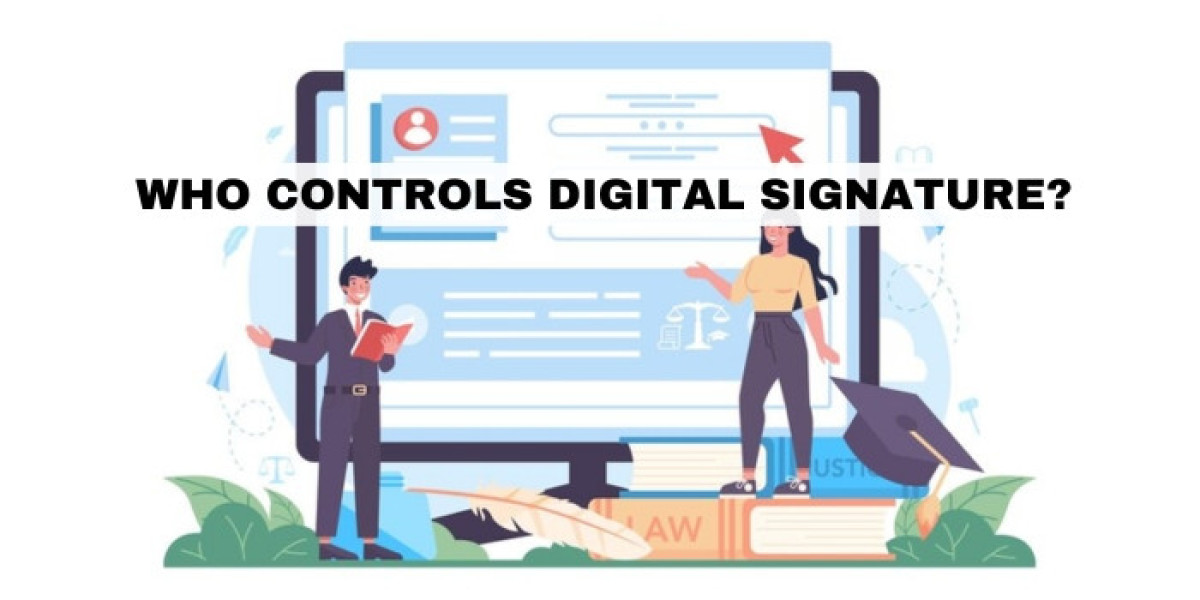In the rapidly evolving landscape of digital transactions, the use of digital signatures has become integral to ensuring the security and authenticity of electronic documents. However, a common question arises: Who controls digital signatures? This blog aims to shed light on the key players involved in the control and management of digital signatures.
What Is Digital Signature?
A digital signature is a cryptographic technique used to verify the authenticity and integrity of digital messages or documents. It provides a way for the sender of a message or the creator of a document to prove that they are the originator and that the content has not been tampered with during transmission.
Here's a simplified explanation of how digital signatures work:
Key Generation: The process begins with the generation of a pair of cryptographic keys – a private key and a public key. The private key is kept secret and known only to the owner, while the public key can be shared openly.
Signing: When a sender wants to sign a document or message, they use their private key to create a unique digital signature. This signature is mathematically linked to the content being signed, and it is appended to the document.
Verification: The recipient, who has access to the sender's public key, can use it to verify the digital signature. If the signature is valid, it confirms that the document has not been altered since it was signed and that it indeed originated from the claimed sender.
Digital signatures are crucial for ensuring the security and authenticity of electronic communications, online transactions, and digital documents. They are widely used in various applications such as email, software distribution, online contracts, and financial transactions.
The Role of Certification Authorities (CAs)
Certification Authorities (CAs) play a crucial role in the control of digital signatures. These trusted entities issue digital certificates to individuals and organizations after verifying their identity. The digital certificate includes the public key of the entity, and the CA's digital signature, creating a chain of trust. CAs are responsible for maintaining the integrity and security of the digital certificate issuance process.
Trust in Public Key Infrastructure (PKI)
Public Key Infrastructure (PKI) is the framework that enables the secure and efficient use of digital signatures. PKI relies on a hierarchical structure, with the root CA at the top. The control over digital signatures is, to a significant extent, vested in the hands of the root CA. Establishing and maintaining a robust PKI is crucial for ensuring the reliability and trustworthiness of digital signatures.
Individual Key Owners - Private Key Holders
The control over a digital signature is also in the hands of the individual or organization that owns the private key. The private key is a critical component of the digital signature process, used for creating the signature. The responsibility for safeguarding the private key rests solely with the key owner. Any compromise of the private key can lead to a breach of the digital signature's integrity.
Government Regulations and Standards
Governments and regulatory bodies play a role in controlling digital signatures through the establishment of legal frameworks and standards. These regulations define the requirements for the use of digital signatures, such as the need for a trusted CA, specific cryptographic algorithms, and compliance with industry standards. Adherence to these regulations is essential for the legal validity and acceptance of digital signatures.
Blockchain Technology and Decentralized Control
Blockchain technology introduces a decentralized approach to digital signatures. In a blockchain, the control is distributed across a network of nodes, eliminating the need for a central authority like a traditional CA. Smart contracts and decentralized identity solutions further enhance the control users have over their digital signatures. This evolving paradigm offers a new perspective on who controls digital signatures in a decentralized world.
Conclusion:
The control of digital signatures is a multi-faceted aspect involving Certification Authorities, Public Key Infrastructure, private key owners, government regulations, and emerging technologies like blockchain. Understanding the roles and responsibilities of these key players is essential for ensuring the security, trustworthiness, and legal validity of digital signatures in the dynamic landscape of electronic transactions. As technology continues to advance, staying informed about these aspects will be crucial for individuals and organizations leveraging digital signatures in their daily operations.








